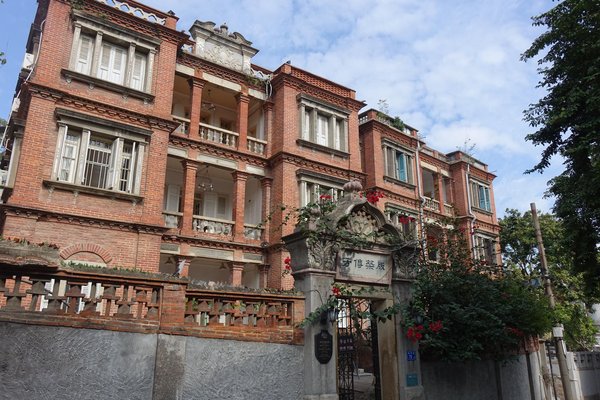China
Kulangsu
Kulangsu: A Historic International Settlement covers an island where Chinese, Southeast Asian and European architectural and cultural values came together.
Foreign missionaries, diplomats and workers lived on Kulangsu while working in the larger city of Xiamen across the strait. They were instrumental in introducing modern Western culture and technology to China in the late 19th and early 20th centuries. The fusion of cultures also resulted in a new architectural style: Amoy Deco.
Community Perspective: Els has written a comprehensive overview of a 3-hour visit to the island, where the exteriors of the historic buildings stand out.
Site Info
Official Information
- Full Name
- Kulangsu: A historic international settlement (ID: 1541)
- Country
- China
- Status
-
Inscribed 2017
Site history
History of Kulangsu
- 2017: Inscribed
- Inscribed
- Type
- Cultural
- Criteria
- ii
- iv
Links
- UNESCO
- whc.unesco.org
- Official
-
- kulangsuisland.org — Guide to Kulangsu
All Links
UNESCO.org
- whc.unesco.org — whc.unesco.org/
Official Website
- kulangsuisland.org — Guide to Kulangsu
Community Information
- Community Category
- Urban landscape: Asian
Travel Information
One million visitors or more
Needs a Ferry
Fujian Hotspot
Recent Connections
-
Perfect Inscriptions
2017 -
Needs a Ferry
Ferries open to visitors arrive in Gula… -
Estuary
"Kulangsu is a tiny island located on t…
Connections of Kulangsu
- Geography
-
-
South China Sea
-
Straits
Lujiang Strait -
Estuary
"Kulangsu is a tiny island located on the estuary of the Chiu-lung River, facing the city of Xiamen." (Official description)
-
- Trivia
-
-
Cultural sites taking up an entire island
-
One million visitors or more
attracting more than 10 million visitors per year (wiki 2025) (capped to 35000 per day) // The State Party indicates that Kulangsu has recently faced a sharp rise in visitor numbers, which increased from 5,748,500 in 2009 to 12,463,000 in 2014. (AB ev)
-
- History
-
-
Fusion
Kulangsu is shown to be unique in that it witnessed mutual reference and a cultural fusion between diverse cultures that materialized in an organic urban fabric, and a slow self-transformation (AB ev)
-
- Architecture
-
-
Urban fabric
-
Art Deco
" exhibits many architectural styles including Traditional Southern Fujian Style, Veranda Colonial Style, Western Classical Revival Style, Modernist Style and Art Deco, as well as their fusion in the unique Amoy Deco Style" (AB ev)
-
- World Heritage Process
-
-
Perfect Inscriptions
2017
-
- Human Activity
- Constructions
-
-
Hospitals
Hongning Hospital
-
- Timeline
-
-
Built in the 19th Century
introduction of modern western culture and technology since the opening of a commercial port at Xiamen in 1843 (AB ev)
-
- WHS Hotspots
-
-
Fujian Hotspot
20 mins ferry from Xiamen Port
-
- Visiting conditions
-
-
Visitor Limits
maximum number of visitors per day would amount to 15,000 (into effect on 15 June 2017) -
Needs a Ferry
Ferries open to visitors arrive in Gulangyu at either of two harbors: the more popular 1 Sanqiutian ferry terminal in the east and the slightly more out-of-the-way 2 Neicuo'ao ferry terminal in the west. (wikivoyage)
-
- WHS Names
News
No news.
Recent Visitors
Visitors of Kulangsu
- Alejandro Lau
- Alexander Lehmann
- Alex Goh
- Alex Marcean
- Ansitong
- Artur Anuszewski
- Atila Ege
- Bernard Joseph Esposo Guerrero
- Bill Koo
- Bill Maurmann
- Bin
- Boj
- Bundi Cao
- chenboada
- Christravelblog
- CugelVance
- cutecid
- cwthong
- delacec
- DL
- Dorejd
- Dr. Caligari
- Dwight Zehuan Xiao
- Els Slots
- Erik Jelinek
- Fan Yibo
- Harry Mitsidis
- henryjiao18
- Jeffrey Chai
- Joel on the Road
- Jonas Kremer
- jxrocky
- Kasper
- Kevin McFarland
- Knut
- Lee Kai Loong
- lichia
- Ludvan
- Luis Filipe Gaspar
- Luke LOU
- MaYumin
- Michael Novins
- Miloš Tašković
- Mo-han Je
- Naim Y
- Nihal Ege
- Patrik
- Pchxiao
- phillipmeng
- ReallyDeepThoughts
- Risson
- Roman Bruehwiler
- Sergio Arjona
- Shandos Cleaver
- Shijie ZHU
- Sijia
- Ssong.x
- Stanislaw Warwas
- Taotao Chen
- Thomas Buechler
- trekkie900
- Vernon Prieto
- Vincent Cheung
- voyager
- wantrain.
- Weecheng
- Xander Huang
- Xiong Wei
- Xiquinho Silva
- Yang Chengyu
- Yi Han Goh
- Yongcheng Liu
- Zhenjun Liu
- Zhou Yan
- Zoë Sheng
- Zos M
- ZZSong
Community Reviews
Show full reviews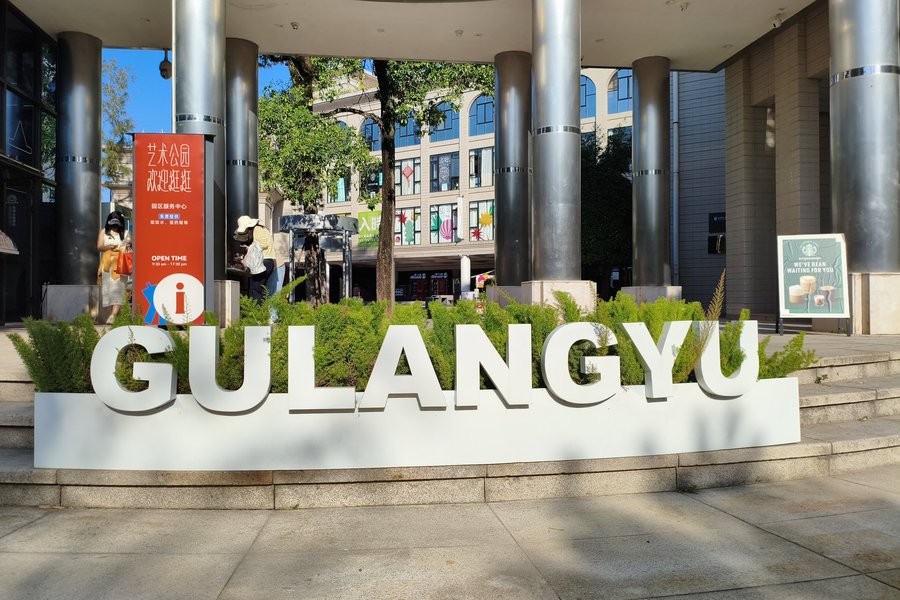
Time of the visit: the 25th of nov.,2025
Kulangsu (also called Gulangyu) is a small, car-free island near Xiamen, China, famous for its unique blend of Chinese and international architecture, musical culture, and history as a harmonious international community.The island is pedestrian-only, making it perfect for wandering its winding lanes.However,being in China always means that you have to pay attention as a pedestrian has no rights....countless oversized electric golfcarts transport lazy visitors from one place to another.And as usual in China the drivers don't care much for the pedestrians. Kulangsu Island is an architectural open-air museum, celebrated for its harmonious blend of architectural styles from around the world. Its most important buildings are not singular landmarks but an entire ensemble that tells the story of its history as an international settlement.A unique fusion of Southern Fujian design, Western layout, and decorative Art Deco motifs. This style is Kulangsu's distinctive architectural contribution.Former British, Japanese Consulates; Kik Kwek So mansion; Bagua Lou (Red Dome House). Buildings showcasing Western Classical, Victorian, and Colonial Veranda styles. They represent the island's 19th/20th-century diplomatic and commercial community.Buildings like the Catholic Church (Xiamen Sacred Heart Cathedral),the Trinity Church; Kulangsu's Hospital. reflect the community's diverse faiths and advanced, modern public infrastructure for its time.The best way to experience Kulangsu's heritage is to wander without a strict map.Just mark some for you outstanding buildings on the island on an offline map like maps.me...I for one was interested to see the Japanese police station, the hospital and the German …
Keep reading 0 comments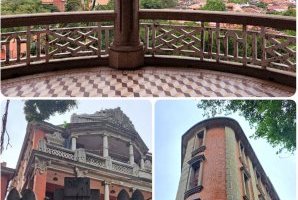
Going to Gulangyu is very straight-forward: a bus to the International Ferry Terminal, then a smooth 20-minute boat ride to the island. If one decides to leave the island after 6PM as my friend and I did, the ferries for tourists then operate at the Piano Ferry Terminal, making the return trip shorter (it also makes it easier to go to Zhongzhan Road next, another top tourist attraction of Xiamen). Before going to Gulangyu, I made a mental note on the buildings that Els failed to see as I curiously wanted to check them out. Upon exiting Sanqiutian Ferry Terminal, the imposing neo-Classical former building of the American Consulate (1930) greets you. Beside it is the former building of the Hongning Hospital, a brick corner building in the style of late Amoy Deco. As it is dubbed as the "Most Beautiful Corner of Gulangyu," a lot of locals are familiar with this building and they make their way up to this point to take their photos. Afterwards, they proceed to the more popular spots on the island namely the Organ Museum/Bagua Mansion (1908), the Piano Museum, and Sunset Rock.
As we were held hostage by the rain early on that day, we sought shelter at Rivers Cafe, which is housed in one of the marked villas. The hour or so spent there was not wasted as we took that opportunity to explore what one of the old villas, which are often fenced and closed, looks like on …
Keep reading 0 comments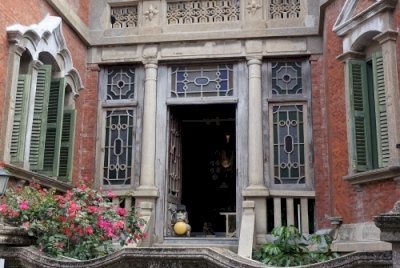
Kulangsu: a historic international settlement comprises of an island off the coast of Xiamen that was inhabited by foreign traders, missionaries and diplomats in the 19th and early 20th centuries. Later in the 20th century, it also became home to Chinese who returned from abroad. Together they gave a modern impulse to China through the input of Western culture and technology. The circa 1000 preserved historic buildings show a mix of European, Chinese and South Asian architectural styles.
The island lies really just right off the coast, you can almost swim towards it. The ferry for the local residents also takes only 5 minutes. Tourists have to leave from a location further away though, with a boat that takes longer (20 minutes). There were at least 200 people on 'my' boat, all Chinese. Kulangsu (Gulangyu in modern Chinese) is a very popular destination for Chinese tour groups: there are no less than 13 million(!!) visitors per year. And that while there even is a daily limit on the number of visitors. On the weekends and around Chinese holidays you have to book the boat in advance, otherwise, you run the chance that the tickets for the day in question (with a maximum of 50,000!) have run out.
After arriving at the dock at 8.30 am on a weekday, I could leave with the 9.10 am ferry. The first boat of the day is at 7.10 am, so there were not many others on the island yet. It is …
Keep reading 0 comments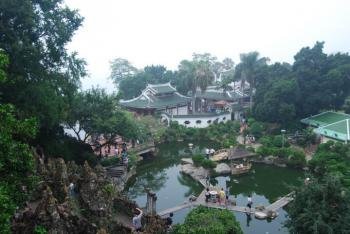
I visited Gulangyu (Kulangsu) in 2010, during a weekend trip to Xiamen (and the Fujian tulou), flying in from Hong Kong, where I was staying for a few months. In a sense, Gulangyu delivers what Hong Kong or Shanghai only promise: the fusion of West and East in a late 19th century / early 20th century international settlement established to trade with China. Gulangyu is surprisingly big and quite well-preserved (though when I visited in 2010, a few of the mansions were in the process of being "spruced up"). Its architecture has a distinctive Western flair to it, but Chinese elements also appear here and there (and it includes at least one fully-fledged Chinese garden). A few parts, such as the giant statue of Koxinga, are of a younger age, and it's a bit strange that they have been inscribed too. As should be expected of most tourist sites in China (in particular those in the middle of a city), it is quite touristy, but (at least in 2010) still bearable. The lack of traffic is definitely a plus - one can just stroll aimlessly around the island to discover its various corners. Overall, it was a very pleasant visit, and a break from the general hubbub of modern Chinese city life.
Keep reading 0 comments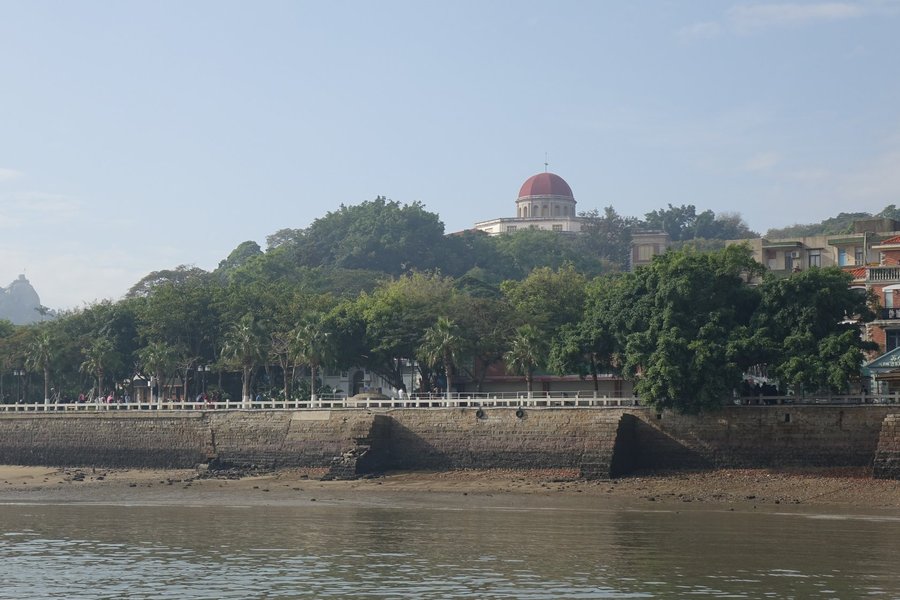
I visited the island in August 2016. It is a delightful oasis of calm, with no cars permitted. The early C20th colonial architecture is abundant and spread across the island, which is fun to explore. There were few western visitors like myself, but it is a very popular domestic tourism site and ferry numbers are limited. I wish the authorities well in the 2017 World Heritage inscription and hope the impact of tourism will be controlled.
Keep reading 0 comments
Visited Kulangsu in 2009. This island not far away from modern China City Xiamen (Amoy). The island is full of tourists by the time I visited and I believe the island itself became more and more heated over the years.
Away from the crowds you may find some peaceful beaches, architectures with obvious western influence. In general this is a popular place in China local love to travel.
Keep reading 0 comments
